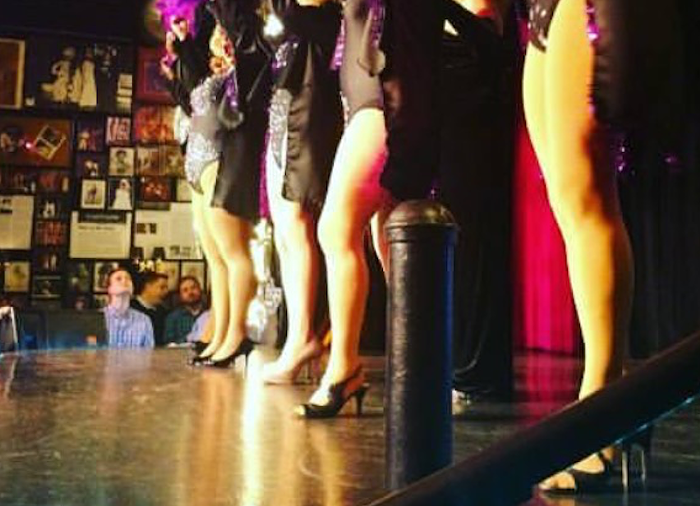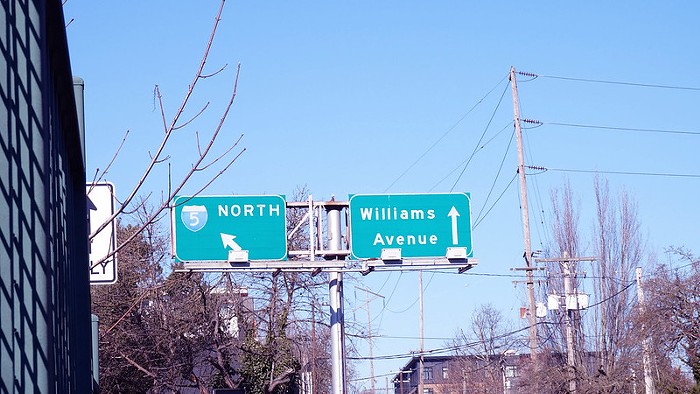
- Ronnie Bass, The Astronomer
One of the reasons for this, of course, is that I’m an elitist prick. In other words, I prefer film. I like the texture of it, the way it can be manipulated, the colors, the imperfections. Yes, I understand video is just as malleable for someone who knows how to fuck with the dials. But, almost without fail, I get hung up on the public access feel of many art videos and my mind simply begins repeating, ”Star wipe... Star wipe... Star wipe... Star wipe...” That is, unless there’s something extraordinary going on in the video—and by “extraordinary” I mean “Kate Gilmore”.
But here’s something fun: For every channel added in a video installation, my enjoyment of it increases 10 fold. Weird, right? It’s true. Give me more places to look; present me with some surprises; make me move my eyes, and swivel my head, and move my body to take it all in; and suddenly I’m completely engaged.
This, then, is my video art continuum. A continuum that couldn’t be better illustrated than in my two very divergent reactions to the works of Ronnie Bass and Charles Atlas, on display at Washington High School through October 17th.
Let’s begin at the “Star wipe” side of my continuum where resides Ronnie Bass’ The Astronomer and 2012. I will admit that Bass’ work is more engaging than a good deal of video works I’ve seen. There are fine moments of Lynchian creepiness—Bass petting/reassuring some kind of whiny, blanket swaddled “thing”—that are truly inspired. His synth-driven music is also kind of nice, if you dig The Cars. But mostly, I couldn’t get past the lowbrow aesthetics and I found myself solving the Bass video riddle in this way: David Koresh and Heaven’s Gate meet E.T. and The Little Prince.
If that’s what he was going for, I can only say, “Well played, sir.” Somehow I think there’s supposed to be more to it than that, but frankly, Bass’ work doesn’t interest me enough to want to find out; there is nothing else there to keep me plugged in, or to inform the experience, just the endless looping duo of video works, playing over and over and over.

- Charles Atlas Tornado Warning
I really enjoy Atlas’ two-part video installation. I like it for the way it creates a three dimensional depth using only well-placed projection. I like how it creates a sense of anxiety in the midst of wonder—just as I imagine a real tornado would. I like that it eschews narrative for an abstract whirlwind of shapes and images.
In the first room, a series of lines and numbers build to create a three dimensional grid that eventually devolves into a swirling cataract of digits. There is something methodical and scientific in the slow, almost malevolent, geometric progression. The grid of an early warning radar system comes to mind, and the numbers themselves (going only to 6) are reminiscent of the Fujita scale used to classify tornadoes. But, as we see when we walk down the hall to the second half of the installation, the numbers and the science mean absolutely nothing compared to the "real life" damage and panic they inflict.
Here is the mesmerizing spectacle of the swirling monster. It’s hypnotic, sure, but also unsettling. Projections skip around the room, like a television set loose in the wind. In one corner a projection on a mesh screen is doubled on the walls behind it, so that the objects seen spinning there have an odd three dimensional quality to them. Along with all of this are distorted scenes of panic, but also of pop culture—our anxiety, then, not just based on fears of destructive weather, but of the culture that swirls, unsettled, around us.
In the end, I suppose comparison between these two artists is unfair. Their methods and focus are wildly different. But if art (or art criticism) was fair, then everyone would have MFAs. And then who’d build your Roland V-1600HD All-In-One Multi-Channel, Multi-Format Live Video Switcher? Huh?












